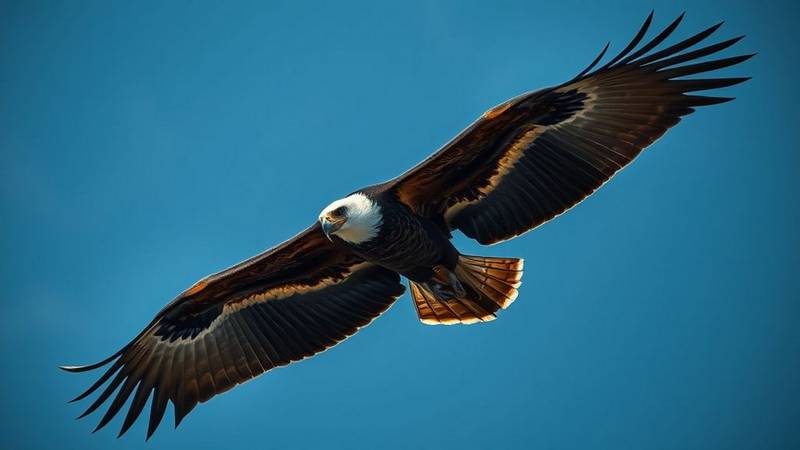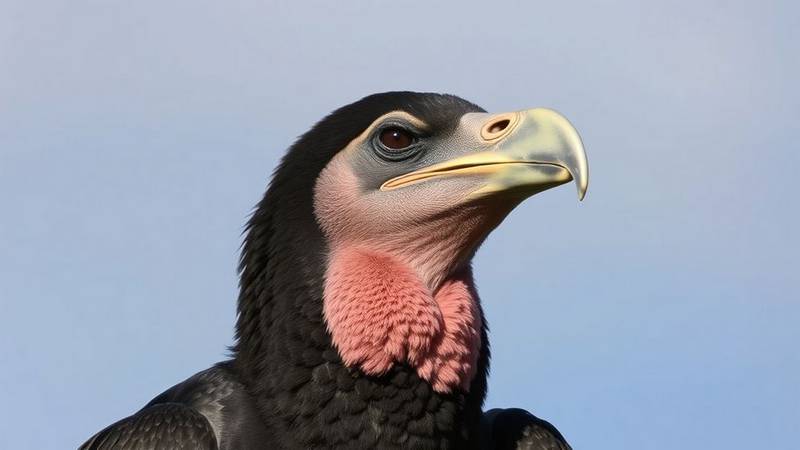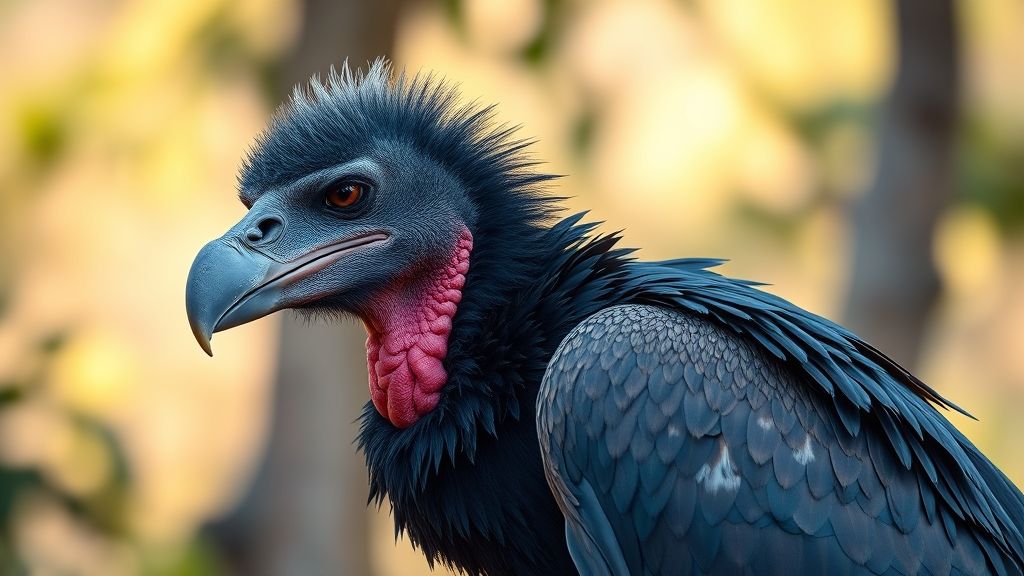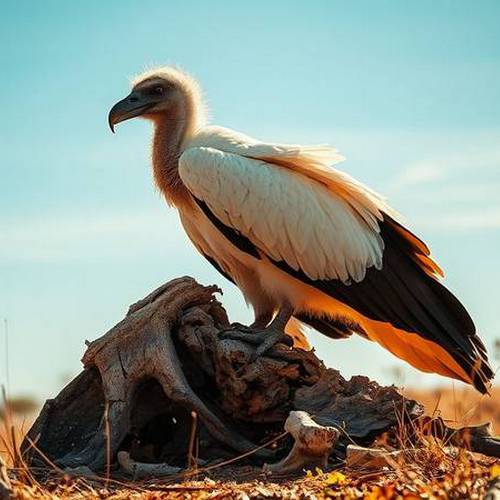Diet
The Andean Condor is primarily a scavenger and necrophagous bird, playing an essential ecological role as a cleaner of ecosystems. Its diet mainly consists of carcasses of large terrestrial mammals, such as Andean camelids (llamas, alpacas, guanacos, vicuñas), deer, and livestock (cattle, sheep).
Thanks to its powerful, hooked beak, it can tear through skin and access the muscles and viscera of large prey. On the coasts, it supplements its diet with marine animal carcasses such as seals, fish, and beached cetaceans. In the absence of large carcasses, it may occasionally feed on small mammals (rabbits, squirrels, rodents), lizards, insects, or even seabird eggs. It can fast for one to two weeks after a hearty meal.
Reproduction
The Andean Condor is monogamous and forms lifelong pairs, reaching sexual maturity relatively late, around 6 to 7 years of age. Reproduction is a slow and spaced-out process, with the female laying a single egg (very rarely two) every two years, or more frequently if the previous chick does not survive.
Condors do not build a true nest. The bluish-white egg, approximately 12 cm (4.7 in) long, is laid directly on the ground in an inaccessible rock crevice, cliff ledge, or cave, often at very high altitudes (above 3,000 meters or 9,800 ft). Incubation lasts between 54 and 58 days and is carried out alternately by both parents.
After hatching, the chick remains in the nest for about 5 to 6 months before taking its first flight. However, it remains dependent on its parents for food for an exceptionally long period, up to two years. This extended period of parental care, the longest of any bird, explains the low birth rate and the species' vulnerability in the event of high adult mortality.
Conservation Status
The Andean Condor (Vultur gryphus) is classified as "Vulnerable" (VU) on the IUCN Red List. Although it was previously listed as "Near Threatened" (NT), its population trend is in continuous decline. The global population was estimated to be only about 6,700 adult individuals in 2018, down from an estimated 10,000 in 2009. The species is particularly rare in the northern parts of its range, notably in Venezuela and Colombia.
The main threats to the Andean Condor are multifactorial:
- Poisoning: Indirect poisoning is a major cause of mortality, often through the ingestion of animal carcasses poisoned by ranchers to target predators like pumas or foxes. Lead from hunting bullets present in carcasses is also a threat.
- Habitat and Prey Loss: Urbanization, hunting, and poaching reduce the availability of large carcasses, their primary food source, and fragment their habitat.
- Collisions: Collisions with power lines and vehicles are also causes of mortality, especially when condors search for food along roadsides.
- Illegal Hunting: Despite its protected status and cultural importance, the Andean Condor is still a victim of hunting.
Conservation programs are being implemented in several countries to protect this emblematic species, including education, population monitoring, and the reintroduction of captive-bred individuals.
Frequently Asked Questions (FAQ)
How to identify the Andean Condor?
The adult Andean Condor has mostly black plumage, a white feather ruff at the base of its neck, and large white patches on its wings, particularly visible in flight. Its head and neck are bald and reddish in color, which can vary with emotion. The male has a distinctive fleshy comb on its head.
Where does the Andean Condor live?
It mainly lives in the Andes Mountains of South America, at altitudes of 3,000 to 5,000 meters (9,800 to 16,400 ft). It can be found from northern Colombia and Venezuela down to Tierra del Fuego, as well as on the Pacific coastal cliffs and sometimes the Atlantic.
What does the Andean Condor eat?
It is a scavenger that primarily feeds on carcasses of large mammals, such as llamas, alpacas, cattle, and deer. On the coasts, it may consume beached marine mammal carcasses like seals, fish, and cetaceans.
What is the conservation status of the Andean Condor?
The Andean Condor is classified as "Vulnerable" (VU) by the IUCN. Its population is declining due to threats such as poisoning, habitat loss, and illegal hunting.
Share Your Andean Condor Observations
Recent Observations
Loading observations...



